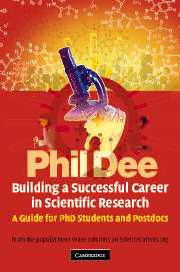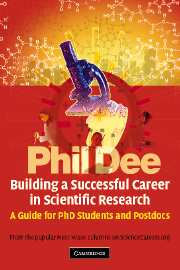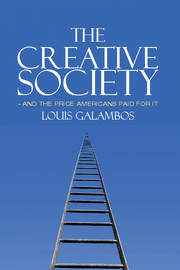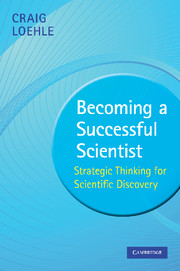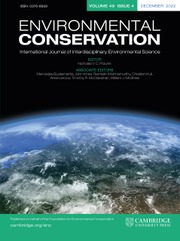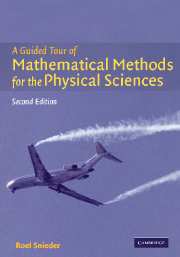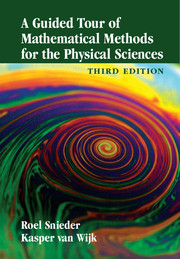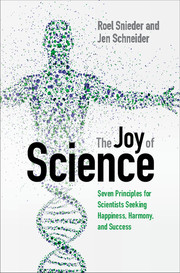The Art of Being a Scientist
This is a hands-on guide for graduate students and young researchers wishing to perfect the practical skills needed for a successful research career. By teaching junior scientists to develop effective research habits, the book helps to make the experience of graduate study a more efficient and rewarding one. The authors have taught a graduate course on the topics covered for many years, and provide a sample curriculum for instructors in graduate schools wanting to teach a similar course. Topics covered include choosing a research topic, department, and advisor; making workplans; the ethics of research; using scientific literature; perfecting oral and written communication; publishing papers; writing proposals; managing time effectively; and planning a scientific career and applying for jobs in research and industry. The wealth of advice is invaluable to students, junior researchers and mentors in all fields of science, engineering, and the humanities. The authors have taught a graduate course on the topics covered for many years, and provide a sample curriculum for instructors in graduate schools wanting to teach a similar course. The sample curriculum is available in the book as Appendix B, and as an online resource.
- Teaches practical skills for doing research, enabling young researchers to develop useful research habits and avoid time-consuming pitfalls
- Provides a sample curriculum of a course for graduate students, supplying professors with ideas on how to educate their graduate students more effectively
- Provides clear advice on career development, allowing students to make informed decisions about career options and strategies for a successful research career
Reviews & endorsements
'… a must for any graduate student.' 'I enjoyed your approach to academic planning, problem solving and personal development. I will certainly recommend your class to other students!' '… I learned a lot of things that will carry into my future research.' Comments from students on Professor Snieder and Professor Larner's course
'… this book will be an important resource for students considering entering careers in science, and I would definitely encourage students to read it.' Kurt Haas, Cold Spring Harbor Laboratory
'… conveys a healthy balance between research as a passion and as a practical reality. It contains a wealth of positive and useful advice that should be of great benefit to young researchers.' Frits van Oostrom, Utrecht University, Emeritus President of the Royal Netherlands Academy of Arts and Sciences
'… so full of useful, considered and well-balanced advice that … the main thought provoked by it is 'why wasn't it around when I was a graduate student?' … littered with relevant and interesting quotes from a wide range of sources … the chapter on communication should be mandatory reading for all scientists, young or old.' The Leading Edge
'The Art of Being a Scientist provides a … modern treatment of soft skills and an updated discussion of the differences between industrial and academic workplaces. … a welcome map for the voyage that is scientific graduate education. Graduate students will find it particularly useful and will likely consult it often throughout their academic experience and beyond; it will be valuable, as well, to undergraduate students as they consider graduate school. … an excellent resource for graduate-school mentors.' Renee D. Diehl, Physics Today
'I strongly recommend this book. I believe that every potential graduate student or mentor should read it.' International Statistical Review
'… valuable to students and their mentors in all sciences, hard or soft, and engineering.' Choice
'… is this book practically useful? The answer is 'yes, yes, and yes!' … This is a true success! … a very good reading for students who plan to make a career in geosciences, educators who wish to supervise their students efficiently … and university managers who are responsible for an academic curriculum. The reviewer will recommend this book strongly to his students …' Zentralblatt für Geologie und Paläontologie
Product details
July 2013Adobe eBook Reader
9781107266513
0 pages
0kg
6 b/w illus.
This ISBN is for an eBook version which is distributed on our behalf by a third party.
Table of Contents
- 1. Introduction
- 2. What is science?
- 3. Choices, choices, choices
- 4. The adviser and thesis committee
- 5. Questions drive research
- 6. Giving direction to your work
- 7. Turning challenges into opportunities
- 8. Ethics of research
- 9. Using the scientific literature
- 10. Communication
- 11. Publishing a paper
- 12. Time management
- 13. Writing proposals
- 14. The scientific career
- 15. Applying for a job
- 16. Concluding remarks
- Appendix A. Further reading
- Appendix B. A sample curriculum
- Appendix C. The Refer and BibTeX format
- Index.


